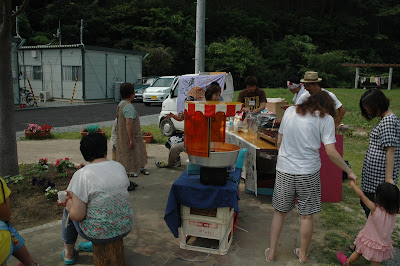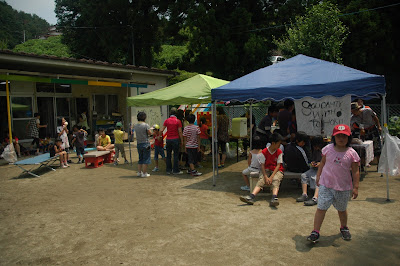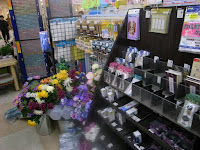Oshima is a small island off the port town of Kesennuma in Miyagi Prefecture. The tsunami of March 11 literally washed over the whole island.

From Kesennuma, we drove to the port, and loaded all our gear and supplies on a truck which went on the ferry that links Kesennuma with Oshima Island. This island has had less support than other areas since it is so isolated. Ships and debris carried inland by the tsunami are still stuck in the mud or in the fields.
We organized an afternoon event and dinner for the 60 people who live in the temporary barrack-village that has been built for villagers who have lost their homes on the island.
We prepared a refreshing summer dish with rice, egg, seaweed, potato salad, vegetables and pork.
Old and young came out of the barracks to enjoy the event and to sing along with SWTJ vocalist Shimomura Yoko. Some of the older islanders started to sing shimauta. These are ancient folk songs of Oshima Island that only the elderly remember.
We are looking forward to be back in Oshima and to cooperate with the people of the island in their efforts to rebuild their future.
Text and photos: Kanazawa Daisuke
(Edited for the English version by B.Y.)































